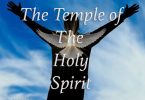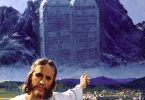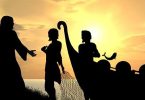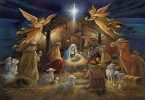12th Sunday of Ordinary Time (Year B)
Scriptures: Job. 38:8-11; Ps. 107:23-26, 28-31; 2 Cor. 5:14-17; Mk. 4:35-41
As I was preparing these reflections, I came across one word that dominates all the sea readings. One homilist names this Sunday as the stormy Sunday. The sea is one of the central imageries in the Bible. The sea appears in the bible from the first book to the last book (Revelation 15:2). There are more than 425 times the word sea/seas appear in the Bible. The Old Testament has some lasting images of the sea. To mention a few, the Spirit hovered over the waters in the creation story (Gen. 1:2). God saved Noah and his family from the floods (Gen.6:1ff). God saved the people of Israel by allowing them to walk through the Red Sea (Ex. 14:21-
22). The ark of the covenant was brought to the promised land from the river Jordan (Josh. 3:14-17). The psalmist prays, that the king may have dominion from sea to sea (Ps. 72:8).
Prophet Jonah was saved from the storm and was thrown at the seashore after three days (Jon. 1:15). The Jewish scriptures always portrayed that the sea had destructive elements as well as a life-giving power. The sea has negative connotations in the Jewish mindset as something where is chaos, emptiness, limitlessness, threat and danger, etc. However, the Jews believed God created the seas. The first reading from the book of Job says that God is the creator. God sets the limits for the sea and fastened the bar of its door. It is controlled by God alone. The beauty of Jewish belief is that they always showed their alliance to God as the creator of the sea. They never worshipped the seas nor did they consider it as God. Psalm 107 (today’s psalm) is a binding force of all the readings. The psalm was sung when a Jew experienced God’s help in his life. There are four groups mentioned in this psalm but the last group is referred to today. There were the ones who were rescued from the desert wastes and the prison for violation of laws; while others found the cure of disease and finally mariners who had been threatened by a mighty storm. In each case, God had heard their cry and saved them. They supposed to go to the temple along with their family to offer the sacrifice of thanksgiving. It was called today sacrifice.
The New Testament writings also gave importance to the sea. Jesus’ life and the disciples spent most of their life around the sea. St. Paul made many missionary journeys. It is interesting to note that Jesus’ ministry revolved around the sea of Galilee in the first half of the Gospel of Mark. Jesus first called the fisherman his disciples (Mk. 1: 16,19, 20). Jesus teaches and heals the crowd (Mk. 2:13; 3:7; 4:1). Jesus crosses the sea freely (MK. 4:35; 5:1,18,21; 6:53,54; 8:10, 13). Three voyages are significantly marked in the Gospel of Mark. They are mainly; calming the sea (today’s Gospel), walking on the sea (Mk. 6:47ff) and conversation about bread (Mk. 8:14ff). Jesus while in the boat was with his disciples, chose to have a deeper conversation with them. He revealed to them who he was. He made them understand the nature and source of power that came through him. The voyages are narrated in such a way that there includes teaching and healing. Crossing the sea means receiving the healing of Jesus in their lives.
Today’s Gospel depicts the first voyage. It is done from the Jewish territory to the gentile land. It is from the west to the east. In the first crossing, Jesus rebuked the stormy sea. He had rebuked earlier in the Gospel of Mark the unclean spirit. The words were similar (Mk. 1:25). Once he arrived on the other side and healed the demonic, a gentile (Mk. 5:1). After the episode, Jesus crosses over to the other side and heals Jairus’ daughter, a Jew (Mk. 5:21ff). While Jesus is on the sea, Jesus displays his true identity. He is seen as someone who calms the sea. He walks on the water. He has total control over the sea. He is seen as God of the Old
Testament who has created the sea and has total control over the sea. It is noteworthy to notice that Jesus is seen sitting in the boat (sea), teaching the crowd who are at the land. (Mk 4:1). The sea of Galilee was also seen as the barrier between the land of Galilee and the foreign land. Jesus easily crosses this barrier.
The symbolism of the sea always dominated in the Jewish scriptures as something destructive and dangerous. The land is seen as a safe, normal and secure environment. Jesus is someone who has conquered the sea. He has overcome all threats of the sea. His power is stronger than the seas. He easily crossed over from one side to another. Today’s liturgy tells us that Jesus has all divine power. We need to only ask ourselves in our journey of life, is Jesus there in our boat?






